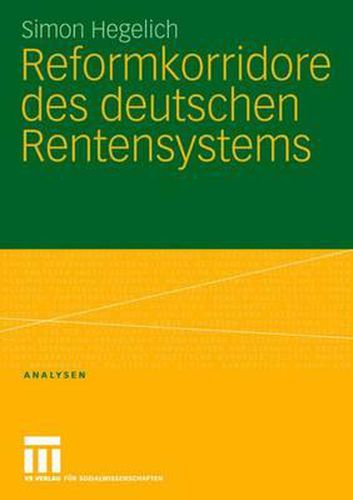Readings Newsletter
Become a Readings Member to make your shopping experience even easier.
Sign in or sign up for free!
You’re not far away from qualifying for FREE standard shipping within Australia
You’ve qualified for FREE standard shipping within Australia
The cart is loading…






This title is printed to order. This book may have been self-published. If so, we cannot guarantee the quality of the content. In the main most books will have gone through the editing process however some may not. We therefore suggest that you be aware of this before ordering this book. If in doubt check either the author or publisher’s details as we are unable to accept any returns unless they are faulty. Please contact us if you have any questions.
Rentenpolitik erscheint als die Vollstreckung diverser Sachnotwendigkeiten, als eine technische Antwort auf geteilte gesellschaftliche Probleme wie den demografischen Wandel und die strukturelle Arbeitslosigkeit. Eine sequenzierte Langsschnittanalyse, die die Entwicklung des deutschen Rentensystems von 1957 bis heute betrachtet, macht deutlich, dass es zu jeder Zeit unterschiedliche Reformkorridore gab, die sich aus den unterschiedlichen Interessen der Kollektivakteure Arbeitnehmer, Arbeitgeber und politisch-administratives System ergeben.
$9.00 standard shipping within Australia
FREE standard shipping within Australia for orders over $100.00
Express & International shipping calculated at checkout
This title is printed to order. This book may have been self-published. If so, we cannot guarantee the quality of the content. In the main most books will have gone through the editing process however some may not. We therefore suggest that you be aware of this before ordering this book. If in doubt check either the author or publisher’s details as we are unable to accept any returns unless they are faulty. Please contact us if you have any questions.
Rentenpolitik erscheint als die Vollstreckung diverser Sachnotwendigkeiten, als eine technische Antwort auf geteilte gesellschaftliche Probleme wie den demografischen Wandel und die strukturelle Arbeitslosigkeit. Eine sequenzierte Langsschnittanalyse, die die Entwicklung des deutschen Rentensystems von 1957 bis heute betrachtet, macht deutlich, dass es zu jeder Zeit unterschiedliche Reformkorridore gab, die sich aus den unterschiedlichen Interessen der Kollektivakteure Arbeitnehmer, Arbeitgeber und politisch-administratives System ergeben.